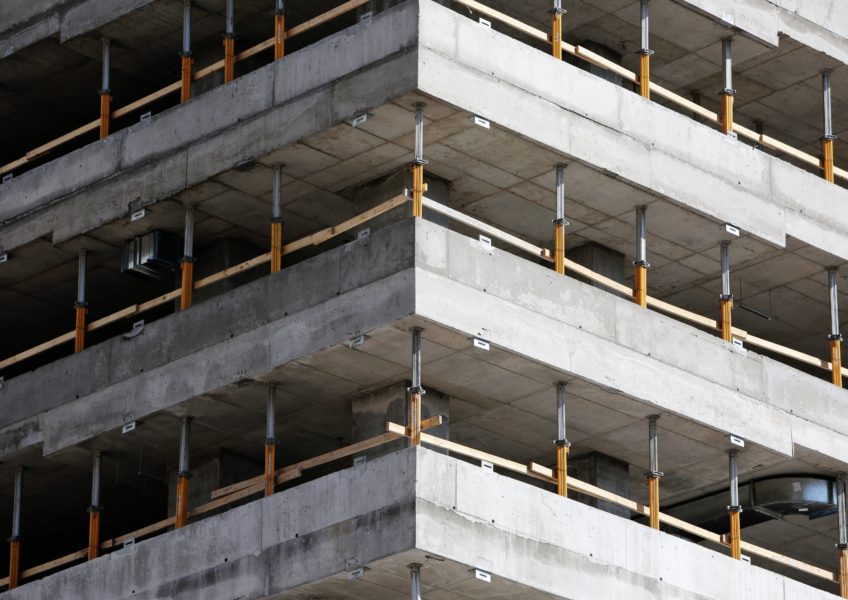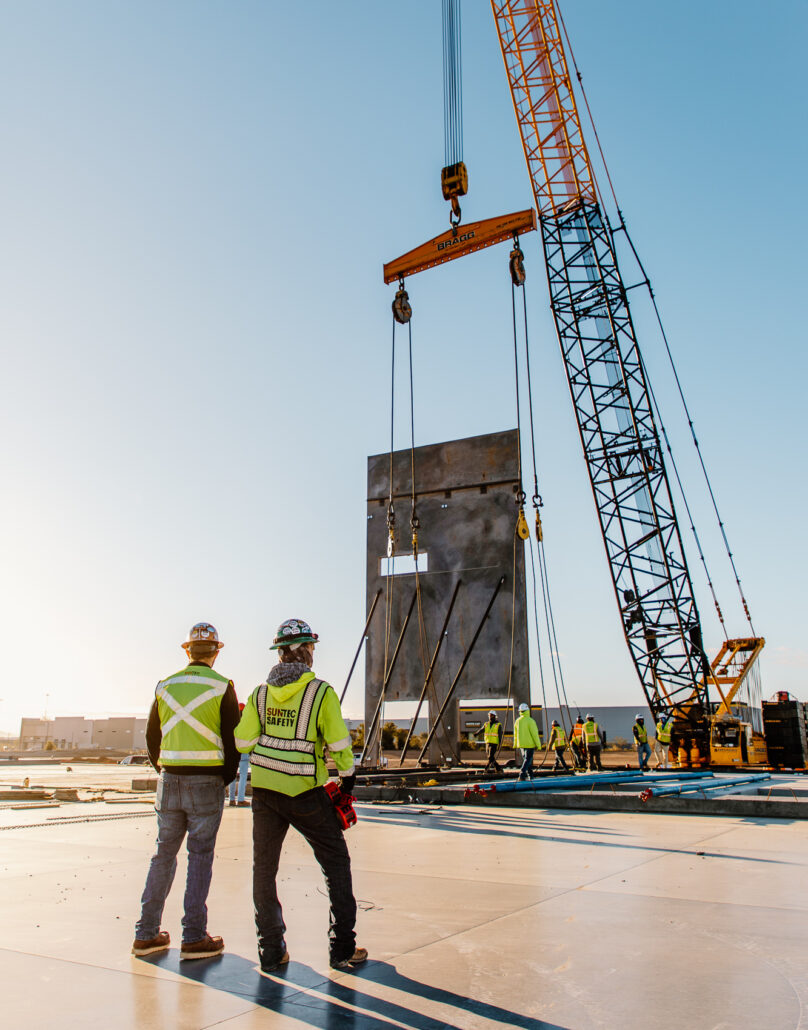The Crucial Role of Concrete Foundation in Structural Stability and Durability
When it pertains to developing a residential property, the foundation is a lot more important than you may believe. Concrete structures supply unequaled stamina and toughness, guaranteeing your framework can stand up to different environmental obstacles. Without a strong base, you take the chance of prospective concerns like changing or splitting, which can endanger security and worth. Comprehending the subtleties of concrete structures might be the secret to preserving your investment for years to come. So, what should you think about next?
Comprehending the Significance of Concrete Foundations
Concrete foundations are vital to the total stability of any framework, as they supply the vital support required to stand up to different loads and ecological conditions. When you think regarding building a home or a business area, the structure is the very first point you ought to consider. It functions as a barrier versus moisture, safeguarding your home from water damage. A well-placed concrete structure also protects against settling and moving, which can result in splits in walls and floorings. You'll intend to ensure that the foundation is properly made and reinforced, as this impacts the longevity of your building. In addition, a strong foundation can enhance power performance by decreasing air leakages. Bear in mind, overlooking the value of a concrete structure can result in pricey repair services down the line. So, buying a high quality structure upfront is necessary for the integrity and resilience of your structure.
Benefits of Concrete Foundations for Architectural Honesty
While several elements add to a building's structural integrity, concrete foundations provide unparalleled durability and toughness. You'll appreciate that concrete can stand up to extreme climate condition, withstanding both wetness and temperature changes. This resilience implies your framework is less most likely to experience fracturing or changing with time, which can endanger its safety.Additionally, concrete's integral weight provides a strong base, stopping motion throughout all-natural events like earthquakes or floods. When you select a concrete foundation, you're likewise choosing low upkeep; unlike timber, it will not rot or draw in bugs, saving you money and time in repairs.Moreover, concrete's fire resistance provides added safety and security, guaranteeing your framework can withstand heats without considerable damage. In general, purchasing a concrete foundation suggests you're prioritizing the long-term security and honesty of your structure, making it a smart choice for any construction task.
Usual Types of Concrete Foundations
When it concerns building structures, comprehending the common kinds of concrete foundations can help you make educated options for your project. One of the most common types consist of slab-on-grade, crawl area, and full cellar foundations.A slab-on-grade foundation is an easy, cost-effective alternative, where a thick concrete slab is put straight on the ground. This type functions well in cozy climates, as it minimizes warmth loss.Crawl area structures raise the home slightly over ground, permitting air flow and access to pipes and electric systems. This style can assist prevent wetness issues.Full cellar foundations supply extra living or storage room while supplying outstanding architectural support. They need more excavation and are typically used in cooler climates to stop frost heave.
Factors to Take Into Consideration When Designing a Concrete Foundation

Ideal Practices for Setting Up Concrete Foundations
When you're mounting a concrete foundation, appropriate website preparation is important to guarantee security (West Coast General Engineering concrete foundation). You'll additionally require to understand reinforcement methods to boost toughness and sturdiness. Don't ignore the healing process, as it plays an essential duty in attaining a strong structure.
Website Prep Work Importance
It may seem uncomplicated, proper website preparation is important for assuring a strong and sturdy concrete foundation. Start by getting rid of the location of any debris, plant life, or natural material that might jeopardize the structure's honesty. Next off, examine the soil kind and compaction; you may require to excavate or add materials to create a stable base. Degree the ground to assure also weight distribution and stay clear of resolving issues in the future. Setting up proper water drainage systems is also necessary to stop water buildup, which can weaken the foundation gradually. Lastly, define the structure's dimensions precisely to direct the putting procedure. By adhering to these steps, you'll set the stage for a successful concrete foundation that stands the examination of time.
Reinforcement Methods Discussed
When the website is correctly prepared, the next step in guaranteeing a sturdy concrete structure involves executing effective support strategies. You ought to start by utilizing steel rebar, which offers tensile strength and helps avoid breaking. Lay the rebar in a grid pattern, making certain it's elevated using spacers to keep proper insurance coverage. Furthermore, consider making use of cable mesh for added support, especially in locations subject to heavy tons. Don't forget to link the rebar intersections safely with wire. For larger structures, fiber support can boost durability, lowering the danger of contraction cracks. Always comply with neighborhood structure codes and guidelines to make certain compliance. By using these reinforcement methods, you'll substantially increase your foundation's stamina and durability, laying a strong groundwork for your framework.
Healing Refine Essentials
To ensure your concrete structure treatments appropriately, it is essential to preserve adequate wetness and temperature conditions right away after pouring. Begin by covering the surface area with a wet burlap or plastic sheeting to preserve moisture. This maintains the concrete moisturized, stopping splits and making sure toughness. You need to likewise monitor the temperature level; ideal treating problems are in between 50 ° F and 90 ° F. If it's as well warm, mist the surface consistently to stop rapid evaporation. For chilly climate, consider making use of shielding blankets to preserve heat. Go for a treating duration of a minimum of seven days, as this is important for optimal toughness development. By following these ideal practices, you'll boost your structure's durability and long life, making sure structural stability for years to find.
Upkeep of Concrete Foundations for Durability
To keep your concrete structure solid and long-term, normal assessments are vital. You must additionally ensure efficient drain options remain in place to prevent water damages. If you detect any splits, addressing them quickly will check my site save you from larger troubles down the line.

Regular Assessments and Analyses
While regular inspections and assessments might seem like a job, they're essential for preserving the integrity of your concrete structure. By regularly looking for splits, changes, or signs of wear, you can capture possible issues prior to they escalate right into costly repair services. Look for any water merging around the structure or unusual settling, as these can signify underlying troubles. It's also smart to keep track of any kind of modifications in your house's framework, like doors that stick or windows that do not open efficiently. Maintaining a record of your assessments assists track changes with time, allowing for positive maintenance. Ultimately, these analyses ensure your foundation stays stable, sustaining the durability and safety and security of your entire structure. Don't ignore this vital element of homeownership!
Reliable Drainage Solutions
Normal evaluations can expose issues like water drainage issues that might jeopardize your concrete foundation's stability. To stop water accumulation, assure your gutters and downspouts straight water far from the structure. Installing French drains pipes can properly reroute surface area and groundwater, reducing pressure on your foundation wall surfaces. Additionally, rating the soil around your home aids guarantee that water moves away, instead of pooling near your foundation.Consider utilizing sump pumps in areas prone to flooding, as they actively get rid of excess water. Frequently check for clogs in water drainage systems and clear them immediately. You'll shield your structure's stability and durability by taking these proactive actions. Bear in mind, effective drain remedies are necessary for keeping a solid, durable concrete foundation.
Motivate Crack Fixes
When you observe cracks in your concrete structure, resolving them immediately is important for preserving its long life. Small cracks can quickly progress right into larger issues, endangering the structural integrity of your home. Regularly check your foundation for indicators of damages, such as straight or vertical cracks. If you spot any type of, do not wait-- fix them instantly. You can make use of epoxy injections or concrete patching substances, which work for sealing fractures. Always follow the manufacturer's directions and think about seeking advice from an expert for substantial damages. Bear in mind, timely fixings not only boost your structure's durability however likewise conserve you cash in the long run by avoiding more extensive repair work down the line. Remain aggressive, and your structure will certainly continue to be solid and protected.
Addressing Usual Issues With Concrete Foundations
Concrete structures can encounter numerous concerns gradually, making it important to identify and resolve them without delay. Among the most common problems is breaking, which can happen because of temperature level variations or settling soil. If you link see cracks, it's vital to evaluate their size and depth; little fractures can typically be sealed, while bigger ones may call for professional evaluation.Water invasion is one more major concern. Excess dampness can result in mold and mildew development and structural degeneration. Assurance correct drainage around your foundation to alleviate this threat. In addition, search for indications of shifting or bowing wall surfaces, as this can indicate underlying problems with your foundation's stability.Regular examinations are basic to catch these issues early. If you detect any worrying indications, don't wait to speak with a structure expert. By remaining aggressive, you can maintain the integrity and longevity of your concrete foundation, guaranteeing your home remains secure and secure.
Frequently Asked Inquiries
Just How Does Dirt Kind Influence Concrete Structure Performance?
Dirt kind significantly influences concrete foundation efficiency. If you have actually obtained extensive clay, for example, it can trigger moving and breaking. Sandy soil might result in working out. Comprehending your soil helps assure a secure structure.
Can Concrete Foundations Be Repaired if Damaged?
Yes, you can repair damaged concrete structures. Relying on the level of the damages, techniques like epoxy injection or piece jacking can recover stability. It's best to speak with a professional for efficient solutions.
What Is the Typical Life-span of a Concrete Structure?
A concrete structure typically lasts 30 to 100 years, depending on elements like soil conditions, environment, and maintenance. You'll intend to maintain an eye on it to guarantee it continues to be healthy throughout its life expectancy.
Are There Option Products to Concrete for Foundations?
Yes, there are choices to concrete for foundations, like steel, timber, or also recycled products. Each alternative has unique benefits and downsides, so you must consider your project's specific needs when selecting the appropriate product.
How Does Environment Influence Concrete Structure Durability?
Climate greatly influences concrete structure toughness (West Coast GE Concrete contractors). Severe temperature levels, moisture, and freeze-thaw cycles discover this info here can deteriorate the material, leading to cracks and structural concerns. You should think about regional climate conditions when planning your foundation to assure lasting performance